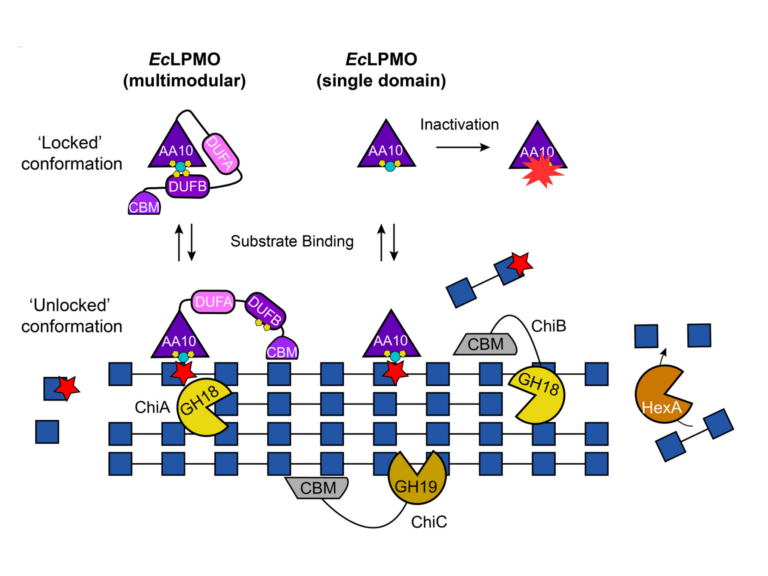F-actin dynamics following mechanical injury of Trichoderma atrovirideand Neurospora crassa hyphae
Highlights
- First study of the actin cytoskeleton dynamics during cell regeneration in filamentous fungi.
- Follows the F-actin reorganization after hyphal mechanical injury until the re-establishment of polarized apical growth in Trichoderma atroviride and Neurospora crassa.
- Demonstrates the synthesis of cell wall at the plugged septum.
- Shows the different F-actin structures that support the remodeling of the septal cell wall into a new apical dome and the remodeling of the plasma membrane.
Abstract
We investigated hyphae regeneration in Trichoderma atroviride and Neurospora crassa, with particular focus on determining the role of the actin cytoskeleton after mechanical injury. Filamentous actin (F-actin) dynamics was observed by live-cell confocal microscopy in both T. atroviride and N. crassa strains expressing Lifeact-GFP. In growing hyphae of both fungi, F-actin localized in three different structural forms: patches, cables and actomyosin rings. Most patches were conspicuously arranged in a collar in the hyphal subapex. A strong F-actin signal, likely actin filaments, colocalized with the core of the Spitzenkörper. Filaments and cables of F-actin were observed along the cortex throughout hyphae. Following mechanical damage at the margin of growing mycelia of T. atroviride and N. crassa, the severed hyphae lost their cytoplasmic contents, but plugging of the septal pore by a Woronin body occured, and the rest of the hyphal tube remained whole. In both fungi, patches of F-actin began accumulating next to the plugged septum. Regeneration was attained by the emergence of a new hyphal tube as an extension of the plugged septum wall. The septum wall was gradually remodeled into the apical wall of the emerging hypha. Whereas in T. atroviride the re-initiation of polarized growth took ∼ 1 h, in N. crassa, actin patch accumulation began almost immediately, and new growing hyphae were observed ∼ 30 min after injury. By confocal microscopy, we found that chitin synthase 1 (CHS-1), a microvesicle (chitosome) component, accumulated next to the plugged septum in regenerating hyphae of N. crassa. We concluded that the actin cytoskeleton plays a key role in hyphal regeneration by supporting membrane remodeling, helping to facilitate transport of vesicles responsible for new wall growth and organization of the new tip-growth apparatus.


